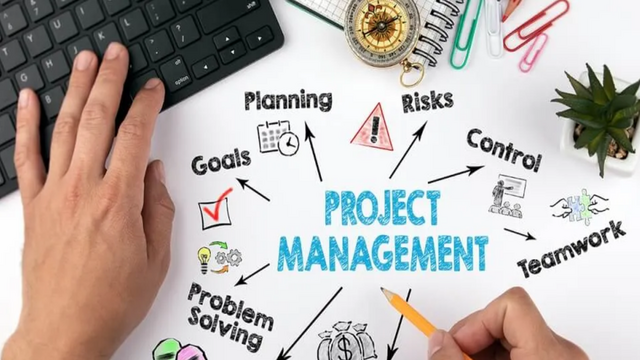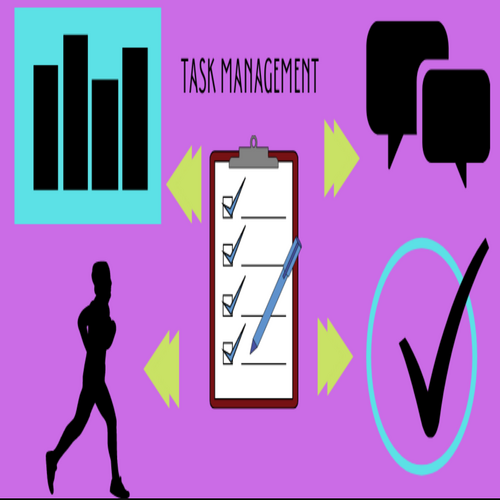How to manage an IT Project

Managing an IT project can be a complex and challenging task, but with the right approach and tools, it is possible to successfully deliver a project on time and within budget. In this article, we will explore some best practices for managing an IT project, including how to plan, execute, and control the project to ensure its success.
- Define the project scope and objectives
Before starting any project, it is important to clearly define the scope and objectives of the project. This includes identifying the problem or opportunity that the project is intended to address, as well as the specific goals and deliverables of the project.
To define the scope and objectives of the project, it is helpful to conduct a stakeholder analysis to understand the needs and expectations of key stakeholders, such as the project sponsor, end users, and any other parties who will be impacted by the project. This will help you to identify the key deliverables and success criteria for the project, as well as any potential risks or constraints that may impact the project.
- Develop a project plan
Once the scope and objectives of the project have been defined, the next step is to develop a detailed project plan that outlines how the project will be executed. The project plan should include a timeline for each phase of the project, as well as a budget and resource plan.
It is important to be as specific as possible when developing the project plan, including identifying the tasks that need to be completed, the resources required to complete each task, and the dependencies between tasks. This will help you to identify any potential bottlenecks or risks that may impact the project schedule.
- Establish a project team
An effective project team is critical for the success of any IT project. The team should include people with the necessary skills and experience to complete the project, as well as representation from key stakeholders to ensure that their needs and concerns are taken into account.
To establish the project team, it is important to identify the roles and responsibilities of each team member, as well as any training or support that they may need to effectively perform their tasks. It is also helpful to establish clear lines of communication and decision-making processes within the team to ensure that all team members are aligned and working towards the same goals.
- Communicate effectively
Effective communication is essential for the success of any IT project. This includes keeping stakeholders informed of the progress of the project, as well as any potential risks or issues that may impact the project schedule or budget.
It is important to establish clear channels of communication between the project team and stakeholders, and to ensure that all stakeholders are aware of their role in the project. This may include regular progress updates, status meetings, and the use of project management software to track project tasks and milestones.
- Manage risks and issues
No project is without risks or issues, and it is important to have a plan in place to manage them effectively. This may include identifying potential risks at the outset of the project and developing contingency plans to address them, as well as monitoring the project for any emerging risks or issues and taking corrective action as needed.
To manage risks and issues effectively, it is important to have a clear process in place for identifying, assessing, and responding to risks and issues. This may include regularly reviewing the project plan and adjusting it as needed to mitigate risks or address issues, as well as keeping stakeholders informed of any changes to the project plan.
- Monitor and control the project
Effective project management requires ongoing monitoring and control to ensure that the project stays on track and delivers the desired results. This includes tracking progress against the project plan, identifying any deviations from the plan, and taking corrective action as needed to get the project back on track.
To monitor and control the project, it is helpful to use project management software to track tasks, milestones, and budget. This will help you to identify any issues or risks that may impact the project, as well as allow you to track the progress of the project and make any necessary adjustments to the project plan.
- Manage project change
Change is a natural part of any IT project, and it is important to have a process in place to manage it effectively. This may include revising the project plan to reflect changes in scope, budget, or timeline, as well as communicating these changes to stakeholders and ensuring that the project team is aligned and working towards the revised goals.
To effectively manage project change, it is important to have a clear process in place for identifying, evaluating, and implementing changes to the project. This may include using a change management process to assess the impact of changes on the project, and to ensure that any changes are aligned with the overall goals and objectives of the project.
- Manage project quality
Ensuring the quality of the project is critical to its success. This includes verifying that the project deliverables meet the specified requirements, as well as ensuring that the project is completed on time and within budget.
To manage project quality, it is helpful to establish quality control processes at the outset of the project, including defining quality standards and metrics, and regularly reviewing the project to ensure that it is meeting these standards. It is also helpful to engage with stakeholders to understand their expectations and needs, and to ensure that the project deliverables meet their requirements.
- Manage project documentation
Effective project documentation is essential for the success of any IT project. This includes keeping track of project plans, schedules, budgets, and any other relevant documentation that will be needed to complete the project.
To manage project documentation effectively, it is important to establish a clear process for creating, storing, and accessing project documentation. This may include using project management software to track and store project documentation, as well as establishing clear protocols for accessing and updating the documentation.
- Close the project
Once the project has been completed, it is important to properly close the project and document the results. This includes conducting a final review of the project to identify any lessons learned, as well as documenting the final project deliverables and outcomes.
To close the project effectively, it is helpful to engage with stakeholders to review the final deliverables and ensure that they meet their needs and expectations. It is also important to document the results of the project, including any successes or challenges encountered, and to share this information with the project team and stakeholders.
Managing an IT project requires a structured and systematic approach, as well as the right tools and processes. By following these best practices, you can effectively plan, execute, and control the project to ensure its success and deliver value to your organization.


